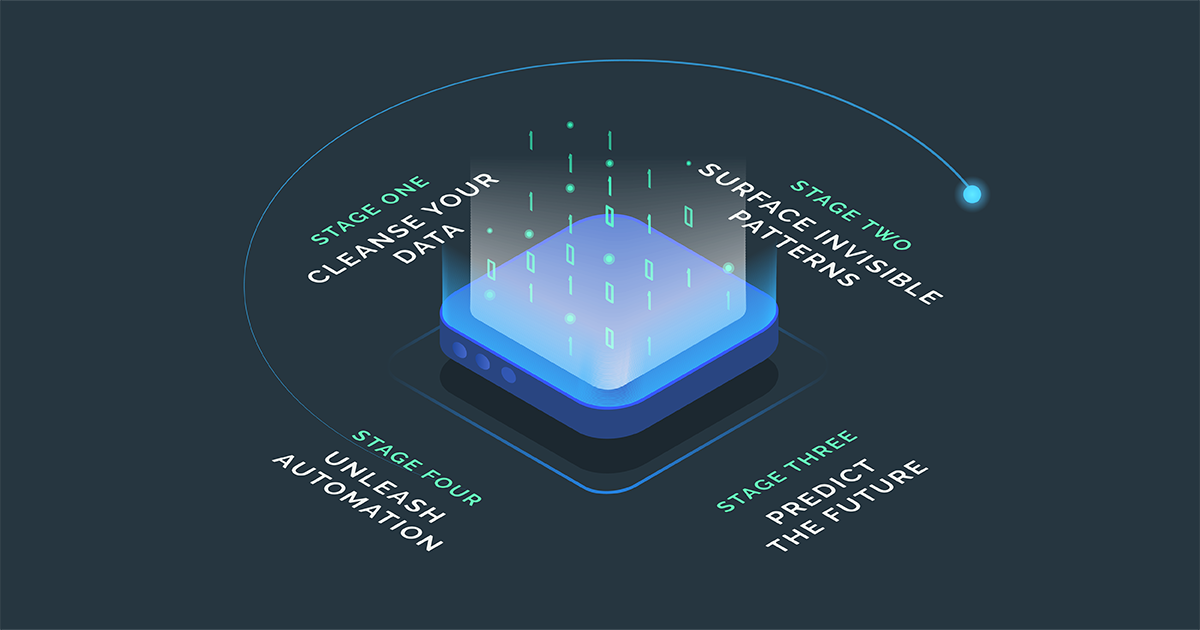Cleansing historical data: The bricks and mortar advantage

In today’s global economy, it’s easy to think that digital-born businesses have a head start on their long-established competitors. Sure, they’re sometimes more agile, their systems may be more integrated, and they might even have less operational overheads. But established businesses can significantly offset these advantages by looking internally, and capitalizing on certain assets that start ups and digital native businesses don’t have.
We’ve already revealed why overhauling your legacy systems could be a big mistake, now let’s explore the secret weapon that gives pretty much every business established in bricks and mortar the means to not only compete, but disrupt their market.
That secret weapon is historical data.
If there is one thing you should take away from this blog, it’s this: Ignoring historical data leads to missed opportunities.
That’s because a huge mass of data from back in the day is one thing those pesky digital-born competitors are very unlikely to have.
But simply knowing that you’re sitting on historical data isn’t enough to put you ahead. You need to know what to do with it.
Lucky for you, we’ve laid it all out right here, complete with an ever-lasting cycle that will help you achieve and maintain a competitive advantage using what you already have.

Let’s take a closer look at this cycle and it’s stages. First things first, it’s time to get your house in order with some sophisticated data cleansing.
Stage one: Cleanse your data
If your data is truly historical, it’s likely you have multiple sources of data, collected by various systems over the course of years – maybe even decades. In this current untidy state, there is a hard limit to how useful your data can be.
However, there is significant potential in this data, and investing the time and energy into consolidating it across multiple silo systems will pay off big.
Data cleansing recap:
This is the process of improving the quality (and usefulness) of your data by finding and either correcting or removing parts that are inaccurate, incomplete or irrelevant. The goal is to consolidate the data, and integrate it with other similar data sets in your system. By pulling it together from disparate sources and making sure it’s validated, unified, accurate, and complete, you’ll reduce the risk of making false conclusions. And false conclusions lead to wrong decisions and wasted investment.
Stage two: Surface invisible patterns
With a potent mix of historical and recent data – all cleansed to be consistent, uniform, accurate, relevant etc. – you’re ready to make discoveries that digital-born competitors simply can’t.
Using a range of A.I. techniques, you can surface patterns and trends within the data that were previously invisible. The analytical and processing capabilities of A.I. mean these discoveries are impossible to make by a person – since there are so many variables and permutations to consider and calculate.
Of course, younger companies can use A.I. too, but your advantage is that the data you’re working with spans a much broader stretch of time, which means you can conduct temporal analyses that reveal previously undiscoverable trends. Integrating data across your many data sets also allows you to find new connections. Both of these gains often result in challenges to corporate bias, where something you’ve always believed turns out to be inaccurate.
Stage three: Predict the future
So what do you do with these exciting patterns that have been hiding all this time? By turning once again to the powerful capabilities of A.I., you use them to make insanely accurate predictions of what will happen in the future.
With the right data set, there are almost limitless things you can predict based on patterns; from forecasting revenue or anticipating customer needs, to foreseeing logistical challenges. Basically anything where the answer would provide your business with a competitive edge.
Once you have those predictions, you can start to shift the actions you take. Every decision you make can be based on insight, helping you to achieve greater outcomes. This might include anything from adjusting stock orders, or reassigning staff to honing your marketing activities.
Stage three is where you overtake the competition. But stage 4 is where you disrupt the whole market.
Stage four: Unleash automation
Using A.I. to make accurate predictions takes the guesswork out of what might be round the corner, and helps you to make better decisions. But the true potential of your historical data is elevated when you add process automation into the mix.
By combining these technologies, you remove the need to manually make decisions entirely. The cognitive power of A.I. means software can make them for you, while process automation executes the best possible actions.
These robust automated processes unleash the value in your data by helping you achieve tangible business outcomes beyond cost and operational improvements.
There are two ways to do this;
- Through supervised automation – where humans use the solution to augment their knowledge and make informed decisions more quickly.
- And unsupervised, “lights out” automation – where decisions are made and executed across the entire process chain without human intervention.
We’ve guided businesses on which approach would incur the least amount of risk and deliver the highest ROI based on their goals and the data they have. Either way, you can use A.I. enabled process automation to build capabilities that are out of reach of even your most agile competitors.
Creating exponential value with your historical data
Once you’re set up with a custom A.I. enabled process automation solution in production, you’ll be able to continually improve it by returning to the start of the cycle. This is because, over time, your solution will gather new data, and you can identify where this needs cleansing, and where it should be consolidated with the rest.
This approach ensures the machine learning models that are built on that original base of historical data are constantly being optimized. By sustaining constant learning and model integrity, you will drive ever-increasing accuracy of prediction and faster execution of actions, continually increasing the value of your A.I. enabled process automation solution.
We’ve explored the value of data cleansing at a high level in this post, but our portfolio of projects demonstrate how real businesses have actually followed this cycle and made significant, effective progress. If you’d like to hear about these projects in a non-binding conversation get in touch.

Get the latest roundup of the most important, interesting and stories from the past week. In your inbox every Saturday by 10am.
Related Articles you might like
Key Strategies for Financial Institutions to Unlock AI Value
In the financial services sector, artificial intelligence (AI) is often heralded as a transformative force capable of revolutionizing everything from […]
View Blog PostIntelygenz President Chris Brown Shares Vision to Revolutionize Finance in FinTech Magazine
Intelygenz President Chris Brown was recently featured in an in-depth interview with FinTech Magazine, in which he outlined his mission […]
View Blog PostBridging the gap: From AI concepts to production success
In recent years, the conversation around artificial intelligence (AI) has shifted from theoretical possibilities to tangible realities. As businesses strive […]
View Blog Post

